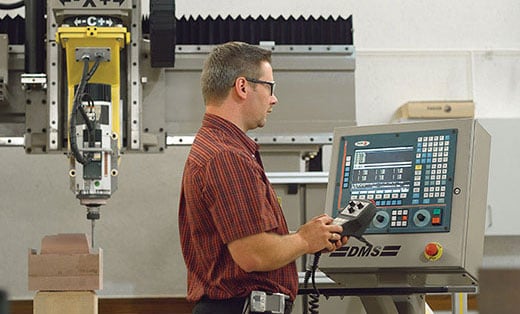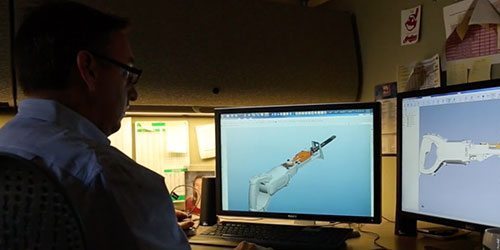By Trevor Jackson, Manufacturing Program Director of Nottingham Spirk’s Global Resource Team.
We work with a lot of partner-clients who want to expand their offerings — sometimes by extending existing product lines, sometimes by moving into unfamiliar adjacent spaces. In both scenarios there can be obstacles, of course; disruptive product innovation requires business innovation as well, and internal change is always hard. Often the most difficult transition for companies to make is rethinking commercialization, the stage roughly between engineering the product and marketing it — design for manufacture (DFM), and decisions about materials, sourcing, tooling, certifications and shipping from factory to warehouse. We often refer to it as “the last mile of innovation,” to emphasize that while it represents the home stretch, it’s as much a part of the process as ideating, insights and design.
They say that generals tend to fight the last war, applying old tactics to new challenges. The same can be true in business. We encounter this occasionally in clients/partners who manufacture their own products. In one such case, the project was not far outside the client’s capabilities — or so we thought. We got word back from their DFM team that an injection mold on the product that we designed was one of the most difficult parts they had seen, and questioned its feasibility. We were surprised by that, and quickly found a factory that could handle it no problem and the project proceeded. But it was an example of how companies can sometimes think backwards, starting with their current capabilities and ideating and designing within those limitations. That company probably never would have pursued that project — which went on to be quite successful — had they not sought out and listened to a partner with a wider range of commercialization experience.
This is why we’ve never limited our services to design and engineering. Commercialization isn’t the stage that follows, it overlaps with them. I’m involved in many program kick-off sessions, so that I understand from the outset the scope of the program and what the client is looking for. I’ll sit in on some of the major meetings involving design, sometimes even meetings about market/user insights and consumer testing. My involvement increases as the project moves into engineering and prototyping, and by that point I’m looking ahead at materials and DFM issues. We look at wall thicknesses, we look at how the parts will be molded, we try to anticipate part defects. We consider materials for durability, appearance and cost. We design for tooling longevity and even plan the assembly so that we can work with the manufacturer on designing an efficient and reliable production line. All of this is important in determining the timeline for delivering the product to market.
In some cases, we even co-invent new materials with our manufacturing partners to solve product requirements.
Many companies don’t realize how many decisions go into manufacturing a product, and when those decisions are made. For instance, if you have two housings, they can be glued together, ultrasonic welded together, screwed together, snapped together, or attached with yet another part. This is why we like to get a manufacturer onboard early on in the design phase, and allow for flexibility in DFM, so that the manufacturer can make recommendations. Manufacturers can be valuable collaborators, if you treat them as such. This collaborative process has helped Nottingham Spirk develop hundreds of trusted relationships with manufacturers around the globe, and some of them have lasted for three decades. This is especially important for complex products like medical devices or anything that has to meet stringent regulatory guidelines.
With everything we do, we’re always trying to push the limits of the materials and the manufacturers. We’re always looking for stronger materials, thinner walls, easier assembly, faster output, longer product life and lower costs. In some cases, we even co-invented new materials with our manufacturing partners to solve product requirements. We are innovating right up to the moment that first shipment leaves the factory.
Learn more about Nottingham Spirk's expertise with product commercialization, as well as our innovation approach.
Contact Nottingham Spirk to discuss how your organization can take innovation to the next level.
About us: Nottingham Spirk is a business innovation and product design firm with an unrivaled record of delivering disruptive consumer goods, medical devices, and packaging design solutions to market. We collaborate with Fortune 1,000 companies, funded start-ups and non-profit organizations to discover, design and execute product programs and strategic business platforms that will wow customers, grow markets and generate new revenue streams. Learn more about what makes us different here.


